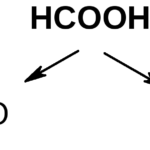In the realm of machinery and precision parts, Chalipure pins have a vital role to play in diverse sectors. The pins have been specifically developed to assure accuracy, stability, and long-lasting, which makes their use essential in a myriad of ways. This article explains the functions, purpose and advantages of Chalipure pins. It explains their importance as a part of both the mechanical and industrial settings.
What Are Chalipure Pins?
Chalipure pins are specially designed metal fasteners that are used for mechanical assemblies. They are made with the highest precision to assure they reliably connect parts and keep the components in the right place. They are typically made of durable substances like stainless steel or hardened alloys. Chalipure pins are made to withstand heat, stress and friction even in extremely high-intensity conditions. They are appropriate to be used in a range of industrial uses, ranging from automotive production to electronic assembly.
The Key Purpose of Chalipure Pins
The principal function the primary function of the Chalipure pins is to add solid fastening to complicated machineries. They function as connectors between different parts which warrant that all parts work properly and align. Many times, they assist in maintaining the structure of the assembly, decreasing the chance of component misalignment or the possibility of system failure. They can also function as guides. They allow for the precision movement of parts in machinery without losing the stability.
Types of Chalipure Pins
There are many types of Chalipure pin that are available, all is designed to meet specific requirements:
- Dowel Pins: Dowel Pins They’re commonly utilized to position machine components precisely. Dowel pins are great for locating and hold pieces on production lines.
- Taper Pins: Taper pins are made with a conical design, making them appropriate for fixing parts which are susceptible to repetitive tension or movements.
- Clevis Pins: They are used mostly in industrial and automotive applications they work in conjunction using cotter pins for the purpose of securing different mechanical devices.
- Cotter Pins: Cotter pins favour extra protection by making sure that the parts are secured. They’re typically used together with Clevis pins.
Every one of the kinds of Chalipure pins has a specific purpose which allows manufacturers to select the perfect opportunity that will meet their individual demands.
Common Uses of Chalipure Pins
Chalipure pins are flexible and can be used across a variety of sectors. These are the most common uses:
- Automotive Industry: Chalipure pin are used extensively in automobiles to fix elements like wheels, engines as well as transmission parts.
- Electronics as well as Appliances: In electronics, these pins are used to secure internal components to prevent displacement or movement due to movement or vibration.
- Construction: Heavy equipment used in construction often rely on Chalipure pin to assure stability and aligning of moving parts.
- Manufacturing and Assembly Lines: Pins warrant that the parts are properly aligned, which reduces the possibility of mechanical mistakes or wear on the part.
Advantages of Using Chalipure Pins
Utilizing the Chalipure pin has numerous benefits which make them a popular option in both mechanical and manufacturing settings:
- High-Performance: Chalipure pin have been made with precise dimensions that guarantee precision in the alignment of parts and in connecting them.
- Durability: Built to withstand heat, strain, and wear and tear, these pins are very durable, which reduces the necessity for replacement on a regular basis.
- Flexibility: The variety of designs offered, Chalipure pin are able to satisfy a variety of requirements, ranging including high load tolerance and precision in alignment.
- Cost-effective: The durability and long-lasting of Chalipure pin decrease maintenance costs and cost for replacement over the long run.
- Simple installation: Pins from Chalipure have been designed to be easy to install which speeds up manufacturing processes.
Materials Used in Chalipure Pins
Chalipure pin generally made from top-quality materials to ensure longevity of performance. The selection of the material is based on the needs of the particular application.
- Stainless Steel: The steel is known for its resistance to wear and corrosion it is an ideal choice for Chalipure pins that are used for corrosive and humid conditions.
- Alloy Steel: Sometimes, for added toughness, alloy steel is suitable for use in applications that require a high load-bearing capacity.
- Aluminum: Aluminized and lightweight, resistant to corrosion, aluminium capture pins are employed in areas in which weight is an issue.
- Bronze and Brass: They are employed in specialized areas that need excellent conductivity and durability to the elements.
The materials used affect the pin’s durability, strength, load tolerance, as well as corrosion resistance and resistance to corrosion, all of which are vital aspects in setting up high-performance.
How to Choose the Right Chalipure Pins
In deciding on the Chalipure pin specifically for a purpose, take into consideration these aspects:
- Capacity of Load: Select an item that will endure the anticipated load without breaking or bent.
- Environment Conditions: For areas that are corrosive or humid the stainless steel or aluminum pins work best.
- Pin Type: Choose the type of pin that is compatible to your requirements for security, be it an alignment pin together a dowel or a clevis for security.
- Size and length: Make sure the dimensions of the pin are within the tolerances required to assure accurate alignment and positioning.
Choosing the best chaplepin guarantees the durability and effectiveness of the components.
Installation Tips for Chalipure Pins
Proper use of Chalipure pin is vital to ensure the performance and durability of the assembly. These are some suggestions:
- ready your Surface: Make sure that the surface on which the pin is going to be put are clear of any debris.
- Align correctly: Align the components appropriately prior to adding the pin, to avoid harming the parts.
- Utilize the appropriate tools: Utilize hammers, pin punches, or other alignment tools to place the pin in a secure manner without the pin to deform.
- Examine for Wear: Check the pins for indications of wear, particularly if they are used in highly-stress situations.
These tips can assist in avoiding premature wear or problems with alignment.
Chalipure Pins as opposed to. Different types of fasteners
Although chaplipure Pin work well in a wide range of uses, they’re often contrasted with other kinds of fasteners.
- Screws: Screws provide powerful holding strength, but they may not bring the same precision when it comes to work that requires alignment.
- Nails: Nails are easy to operate, however, they do not have the toughness and endurance like Chalipure pin, notably for heavy-duty use.
- Bolts: Bolts offer great clamping strength however they need more parts like nuts to provide solid fixing.
For situations in which the precision of alignment and longevity are essential, Chalipure pins can be a better choice than conventional fasteners.
Maintenance of Chalipure Pins
The maintenance of the pins of Chalipure is simple, yet essential in extending the life of their pins. Make sure to follow these tips for maintenance:
- Check regularly: Examine pins for any signs of corrosion wear, or deformation and then replace them as required.
- Apply lubrication when needed: When moving components A light coating of lubricant will decrease friction and wear on pins.
- Maintain Dry and Clean: When working in areas that are susceptible to humidity keeping pins dry and dry can help prevent corrosion.
Regular maintenance is a great way to extend the life span of Chalipure pin. This will ensure that your pins are safe and efficient. the assembly.
Conclusion
Pins for Chalipure can be crucial to ensure the integrity of structural assembly pieces across various sectors. They are renowned for their accuracy as well as their durability and flexibility, they impart an effective solution for locking and aligning mechanical components. When choosing the correct Chalipure pin’s type material and dimension, companies can increase their product’s longevity and durability. their items. For industries that require reliable solutions for fastening, Chalipure pin offer unmatched effectiveness and quality, making their use an integral part of the contemporary manufacturing and assembly processes.
FAQs
1. What exactly are Chalipure pins to do?
Chalipure pins can be found across a variety of industries to align the axis, stabilizing, and securing mechanical elements.
2. What should I consider when choosing the best Chalipure pin?
Be aware of the capacity for load and environment. Also, the dimensions, type along with the size and length you need to meet your particular needs.
3. Are Chalipure pins be employed in environments that are corrosive?
Pins that are made from substances that resist corrosion, such as aluminum or stainless steel are appropriate in these environments.
4. Are Chalipure pins durable?
Yes, they’re designed to last and are able to withstand extreme stress, friction and temperatures.
5. What is the accurate way to install pins for Chalipure correctly?
Make up your surfaces and align components with the correct equipment to protect the components and warrant an even placement.












